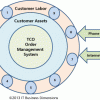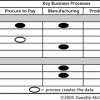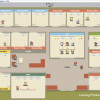Strategic advice to leverage new technologies
Technology is at the heart of nearly every enterprise, enabling new business models and strategies, and serving as the catalyst to industry convergence. Leveraging the right technology can improve business outcomes, providing intelligence and insights that help you make more informed and accurate decisions. From finding patterns in data through data science, to curating relevant insights with data analytics, to the predictive abilities and innumerable applications of AI, to solving challenging business problems with ML, NLP, and knowledge graphs, technology has brought decision-making to a more intelligent level. Keep pace with the technology trends, opportunities, applications, and real-world use cases that will move your organization closer to its transformation and business goals.
Recently Published
Measuring the value of IT can best be determined by building an IT investment portfolio where customer goals drive the IT projects.
Measuring the value of IT is something that every CIO and IT customer has been asking how to do for years.
SMAC for the Enterprise
Data Quality and Governance in Projects: Knowledge in Action
Agile Processes in Virtual Spaces
enterprises are now exploring techniques in all areas for extending communication and collaboration in the complex, task-oriented agile world, from rules and processes up to communications technologies and supporting software. Consequently, there has been a flux in a variety of experiments in creating shared virtual spaces for improving team communication and the ability to work together on complex projects over a distance.











